| REF: | 15080_311120 |
| DATE: | 30 Jun - 04 Jul 2025 04.Jul.2025 |
| LOCATION: |
Geneva (Switzerland) |
| INDIVIDUAL FEE: |
5200 Euro |
Introduction:
The Air Safety Program focuses on European regulations and the International Civil Aviation Organization (ICAO) recommendations. It also includes industry best practice recommendations. Participants gain valuable insights into airside regulations, hazard identification, emergency procedures, and effective communication protocols.
This airside safety course aims to provide comprehensive training about key safety approaches and practices, with sessions covering the entirety of the airfield movement area. It strives to raise awareness of safety hazards and risks commonly encountered in the dynamic airside working environment, reflecting the importance of what is airside safety.
The program also aims to understand airside safety signs and pavement markings to ensure clarity and compliance with safety protocols on the airside. Participants will learn about the purpose, interpretation, and importance of accurate signage and markings to maintain a safe operational environment.
Targeted Groups:
- Aerodrome Middle Management, Quality, Operations, and Safety staff are responsible for airside safety management and need in-depth knowledge and understanding of airside safety and operations.
- Any airside operations staff are involved in airside safety operations duties, including apron safety compliance monitoring, apron management, and ground operations.
Course Objectives:
At the end of this airside safety course, participants will be able to:
- Identify and reduce airside risks for personnel, aircraft, and property associated with various functions at the airside.
- Reduce injuries, incidents, accidents, and ground damage at their airports.
- Appreciate and improve human and organizational factors in airside safety.
- Implement comprehensive airside safety training programs.
- Improve airside safety by implementing incident investigations, inspections, audits, and supervision.
- Leverage best safety practices drawn from the airside safety handbook and other resources.
Targeted Competencies:
At the end of this airside safety course, participants' competencies will:
- Understand airside operations and regulations.
- Identify and mitigate potential hazards.
- Implement safety procedures during ground operations.
- Understand emergency response and evacuation proficiency.
- Know airport layout and signage systems.
- Familiar with airside equipment and machinery.
- Effective communication and coordination skills.
- Learn about wildlife management techniques for hazard prevention.
- Assess weather conditions and their impact.
- Report of safety incidents for continuous improvement.
Airside Safety Training:
The airside safety training course participants encompass various individuals involved in airport operations, including ground crew members, air traffic controllers, maintenance personnel, and aviation security staff. These participants unite to enhance safety standards and minimize risks associated with airside activities.
Participants are empowered to contribute proactively to maintaining a secure airside environment, ensuring the safety of personnel, passengers, and aircraft. The course fosters a culture of continuous improvement, encouraging participants to remain vigilant, report safety concerns, and implement best practices to uphold the highest standards of airside safety.
Course Content:
Unit 1: Introduction to Airside Safety:
- Understand the critical role of airside operations in airport safety.
- Overview of regulatory frameworks governing airside activities.
- Identify key stakeholders involved in airside operations.
- Understand the emphasis on fostering a robust airside safety culture.
- Intro to the comprehensive objectives of the airside safety training.
Unit 2: Hazard Identification and Mitigation:
- Recognize common airside hazards: runway incursions, FOD, and wildlife.
- Utilize risk assessment techniques for hazard evaluation.
- Implement diverse mitigation strategies: engineering controls, administrative measures, and PPE.
- Real-world case studies illustrate the repercussions of unchecked hazards.
- Know the practical exercises for hands-on hazard identification and mitigation practice.
Unit 3: Safety Procedures During Ground Operations:
- Know the detailed guidance on safe aircraft marshaling, parking, and towing.
- Learn about mastery of hand signals and communication norms between ground and aircrew.
- Understand the proper handling of ground support equipment: tugs, loaders, and fuel trucks.
- Stress on situational awareness and vigilance during ground operations.
- Know simulation-based learning to reinforce proper safety protocols.
Unit 4: Emergency Response and Evacuation Procedures:
- Understand the step-by-step protocols for aircraft emergencies: fires, evacuations, and crashes.
- Learn about the hands-on training in firefighting equipment usage and evacuation slide deployment.
- Know the emphasis on coordinated communication amidst emergency chaos.
- Learn about drills and simulations for practical emergency preparedness.
- Review of post-incident debriefing and reporting for continual improvement.
Unit 5: Airport Layout and Signage Systems:
- Know the detailed exploration of airport layout, runways, terminals, and signage.
- Interpreting signage systems is crucial for safe navigation.
- Train on deciphering airport diagrams and charts.
- Stress on clear communication and adherence to signage to prevent incidents.
- Interactive exercises to enhance participants' signage comprehension.
Unit 6: Airside Equipment and Machinery:
- Overview of airside machinery: tugs, de-icers, baggage handlers.
- Understand safety features and operational protocols.
- Train on equipment maintenance and inspection best practices.
- Identify potential hazards and risk mitigation strategies.
- Hands-on sessions will familiarize you with airside equipment operation.
Unit 7: Communication and Coordination:
- Understand the necessity of effective communication and coordination among airside personnel.
- Explore mastery of radio communication protocols and terminology.
- Explain teamwork's critical role in smooth and safe aircraft operations.
- Understand strategies for conflict resolution and communication breakdown management.
- Know the role-playing exercises for honing communication and coordination skills.


